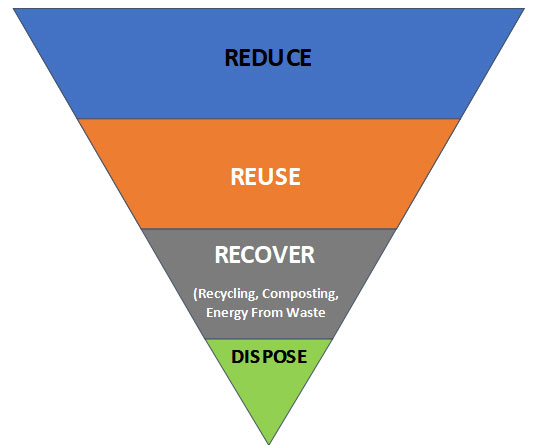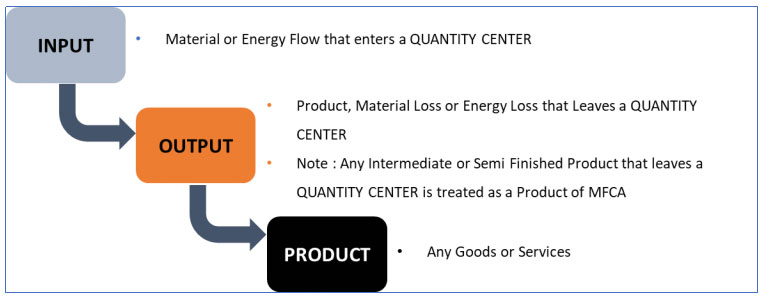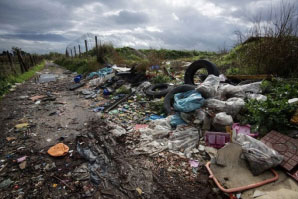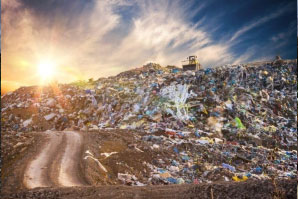Soil pollution assessment
- Home
- Soil pollution assessment
Soil pollution is a chemical degradation process that consumes fertile soils, with implications for global food security and human health.
Soil pollution hampers the achievement of Sustainable Development Goals (SDGs), including achieving zero hunger, ending poverty, ensuring healthy lives and human well-being, halting and reversing land degradation and biodiversity loss, and making cities safe and resilient.
Most contaminants originate from human activities and enter into the environment because of unsustainable production chains, consumption patterns or inappropriate waste disposal practices.
Zero to waste (Soil Pollution)
Business benefits of implementing Zero Waste approach:-
• Zero Waste diverting all wastes from landfill disposal
• Improved Resource Economy and Efficiency
• Synergy with Continual Improvement Initiatives
• Improved Financial Performance
• Saves costs and reduces environmental impacts
• Help in Greenhouse gas reduction, energy efficiency, or other environmental goals
• Stronger Brand Identity
• Reduced Legal Exposure
Need of Zero waste land Certification
• Zero Waste to Landfill certifications provides improved credibility and visibility to an organization’s efforts to improve its environmental impacts within an organization as a whole. • Responsible and clean manufacturing have become expectations to customers. • Implementing a Zero Waste to Landfill program will result in not only efficiency in manufacturing processes but can also save physical and financial resources through energy conservation and reuse of raw materials.

Challenges :-
• Responsible and clean manufacturing have become expectations to customers and interested parties within industry. • Sustainability efforts such as waste diversion from landfills are important steps to demonstrate environmental stewardship. • Implementing a Zero Waste to Landfill program will result in not only efficiency in manufacturing processes but can also save physical and financial resources through energy conservation and reuse of raw materials
Waste :-
Materials that are not products or By-Products for which the generator has no further use for the purpose of production, transformation, or consumption.
Explanation :• Wastes includes the Materials may be generated during, THE EXTRACTION of Raw materials, The Processing of Raw Materials in to Intermediates and Final Products, the Consumption of Final Products and through Other Human Activities and EXCLUDES RESIDUALS RECYCLED OR REUSED AT THE PLACE OF GENERATION
• By-Product means a Material that is not intended to be produced
• But gets produced in the production process of intended product and is used as such.
Indsutry Specific Wastes :-
• Fly Ash in Thermal Power Plants
• Rejected Pharmaceutical Products. Rejected Solvents
• Slags from the Metal Production
• Non Conforming Transformer Oil Generated in Testing of Transformers
• Construction Waste with different Classifications
• Waste Generated from Incineration of Black Liquor in Paper Industry
• Rejected and Expired Food Items i.e. Beverages, PET Bottles, Waste / Spent Electrolytic bath in Electroplating (Chrome or Zinc Plating etc.)
• Coolant / Cutting Oil in Machine Shops
• Discarded Tools
• Electronic and Electrical Industries etc.
Other Justifiable Wastes :-
• Non conforming products generated and returned from the customer
• Wastes generated by contractors working in organizational premises
• Off site wastes with organizational accountability (life cycle perspective)
• Wastes generated at outsourced processes where the organization has the responsibility and ccountability of control and responsible care
• Wastes generated at off-sites of the organization
• Others
Intermitent Wastes :-
• Ion Exchange Resins
• Wastes Generated During Periodic Shutdowns
• RO Membranes
• Worn out Rubber Parts, Alloyed Metals, Wastes Resulting from Engineering Replacements
• Wastes Generated during Projects
• Non Conforming Products / Process Offcuts
• Discarded e waste as classified
• Other Non Performing Assets
Other Classification :-
• Generated waste
• Declared waste
• Stored waste
• Disposed waste
• Unaccounted waste
• Quantified waste based on mass balance against actual load
• Conditions and variables
Other waste :-
Other waste means wastes specified in part B and Part D of schedule III for import or export and includes all such wastes generated indigenously within the country
• Mix non ferrous metals
• Metal and Metal alloys
• Zinc ash and residues
• Waste of copper and copper alloys
• Metal bearing wastes arising from melting, smelting and refining of metals
• Used Electrical and electronic assemblies other than those listed in Part D of schedule III
Spent Catalyst
Advantages & Disadvantages of Landfill :-
A major disadvantage to burying trash in landfills is the potential to pollute surrounding soil and groundwater with toxins. When trash decomposes, it releases methane and other greenhouse gases that contribute to climate change and may also cause health problems to humans and animals.
• Toxins
• Leachate
• Greenhouse Gases

GREEN PRODUCTIVITY AND MATERIAL FLOW COST ACCOUNTIN
• The need for fundamental change by moving Businesses towards Resource Efficiency and taking a holistic life cycle view of Products was recognized in 1990s.
• MFCA developed in Germany in the late 1990s and since adopted widely in Japan focuses on Tracing Waste, Emissions and non products and can help boost an Organizations’ Economic and Environmental Performance.
• It is now the Major Tool of Environmental Management Accounting.
• MFCA is Management Tool that increases the Transparency of Material Flow , which is a key to successful problem solving and improvement.
• By organized Accounting and Reconciliation of Wastes the organizations can Increase their Resource Productivity and Reduce Costs at the same time.
MFCA FOCUSES ON REDUCING THE MATERIAL WASTAGE AT SOURCE
• Combines the concept of process efficiency & environment Performance.
• Focuses on optimal resource utilization.
• Improves material efficiency
• Contributes towards improvement of energy efficiency .
• Overall cost reduction & increase in profitability.

INPUT – OUTPUT – PRODUCT :

DETERMINATION OF QUANTITY CENTRES
• All Production Processes as per Cost Centre Records
• Mechanical maintenance, Electrical (O&M), Instrumentation & Automation, IT
• All Utilities and Services
• All Storages. In house or Outside Warehouses
• Outsourced Processes ( In house & Offsite)
• Central Waste Disposal & Accounting Process
• Transport & Others
• Quantity Centre may be a Subset / Sub Division of the main Process
• May be Different Production Lines of the same / similar product
• The list of Quantity Centres, Input / Output / Mass Balance diagram to be Prepared
IDENTIFICATION OF INPUTS AND OUTPUTS FOR EACH QUANTITY CENTER QUANTIFICATION AND MATERIAL FLOWS.
• For each Quantity Centre Determined Inputs & Outputs to be Identified
• Possible Inputs are Raw Materials and Auxiliary Materials to be known
• Possible Outputs are Products, By Products, Materials, Wastes and Energy Losses
• Regular, Intermittent Wastes to be identified
• The waste sludge from the Scrubbers, Cooling Towers, the during Tank discarded material during
• Tank Cleanings, Waste / Used Oil, Empty Drums / Containers, Thermocole Packing Waste, Mineral Wool from Insulating Pipes etc to be included
• Quantification of Inputs and Outputs in relevant Units against a given Output is determined against ideal Conditions
• Process Variables are known there must be a Process Related justifications Where WASTE
IDENTIFICATION OF INPUTS AND OUTPUTS FOR EACH QUANTITY CENTER QUANTIFICATION AND MATERIAL FLOWS.
• For each Quantity Centre Determined Inputs & Outputs to be Identified
• Possible Inputs are Raw Materials and Auxiliary Materials to be known
• Possible Outputs are Products, By Products, Materials, Wastes and Energy Losses
• Regular, Intermittent Wastes to be identified
• The waste sludge from the Scrubbers, Cooling Towers, the during Tank discarded material during
• Tank Cleanings, Waste / Used Oil, Empty Drums / Containers, Thermocole Packing Waste, Mineral Wool from Insulating Pipes etc to be included
• Quantification of Inputs and Outputs in relevant Units against a given Output is determined against ideal Conditions
• Process Variables are known there must be a Process Related justifications Where WASTE
MATERIAL LOSS.
All Material Outputs generated in a Quantity Centre, except for Intended Products
• NOTE 1 : Material Losses also Include Air Emissions, Waste Water & Solid Waste even if these Material Outputs can be reworked, recycled or used Internally or have market Value.
• NOTE 2 : By Products can Either be Considered Material Losses or Products at the discretion of the Organization.
STRONG MOTIVATION TO REDUCE WASTE AND MATERIAL INPUTS
• MFCA identifies quantities of each material and its costs (including material, processing, and waste treatment costs)
• This enables us to look at each of the sources of waste generation in a separate way and identify improvement opportunities that could lead to the reduction of waste generation itself
• Using this information, organizations can identify the costs of losses caused by waste and other emissions, as well as defective products, and calculate the quantities and resources used in each process and the costs associated with these processes
• MFCA acts as a strong motivation for organizations to reduce waste and material inputs, leading to cost reductions and increased productivity
IDENTIFICATION OF INPUTS AND OUTPUTS FOR EACH QUANTITY CENTER QUANTIFICATION AND MATERIAL FLOWS.
• For each Quantity Centre Determined Inputs & Outputs to be Identified
• Possible Inputs are Raw Materials and Auxiliary Materials to be known
• Possible Outputs are Products, By Products, Materials, Wastes and Energy Losses
• Regular, Intermittent Wastes to be identified
• The waste sludge from the Scrubbers, Cooling Towers, the during Tank discarded material during
• Tank Cleanings, Waste / Used Oil, Empty Drums / Containers, Thermocole Packing Waste, Mineral Wool from Insulating Pipes etc to be included
• Quantification of Inputs and Outputs in relevant Units against a given Output is determined against ideal Conditions
• Process Variables are known there must be a Process Related justifications Where WASTE


